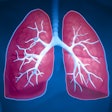The Organization for Safety, Asepsis and Prevention (OSAP) has released information to help dentists reassure patients who may be fearful about dental care following the recent infection control breach by an Oklahoma dentist.
Oklahoma health officials are notifying approximately 7,000 patients of Tulsa oral surgeon W. Scott Harrington, DMD, about potential exposure to HIV, hepatitis B, and hepatitis C after investigators found rusty instruments and lax sterilization procedures in his office.
To help patients feel safe, OSAP suggested these talking points:
- Inform patients that the practice uses evidence-based infection control precautions as recommended by the Centers for Disease Control and Prevention (CDC).
- Explain that dental anesthetics are provided using sterile single-use needles and cartridges of anesthetic, and these items are discarded after each patient.
- If IV medications are used, the medications are either from single- or multidose vials that are accessed only once with a single needle and syringe; additional medications, even for a single patient, are drawn with a new syringe and needle.
- Explain the sterilization process, including thorough cleaning, examination, and sterilization of instruments.
- Reassure patients that instruments are maintained in sterile pouches or wraps until they are needed for patient care.
- Discuss the processes for sterility assurance, including chemical indicators on and/or in packs of instruments and the regular monitoring of the sterilization process though the use of a biological indicator (spore test).
- Reassure patients that all procedures are provided only by professionals licensed to provide those services.
OSAP also recommends that dental professionals periodically review infection control procedures and have them in writing. Communication between team members also is essential to ensure that everyone understands their role in the infection control processes.
Annual reviews of written protocols should include all team members and the scientific literature; resources from the CDC, OSAP, and ADA should be reviewed for changes in recommendations.



















